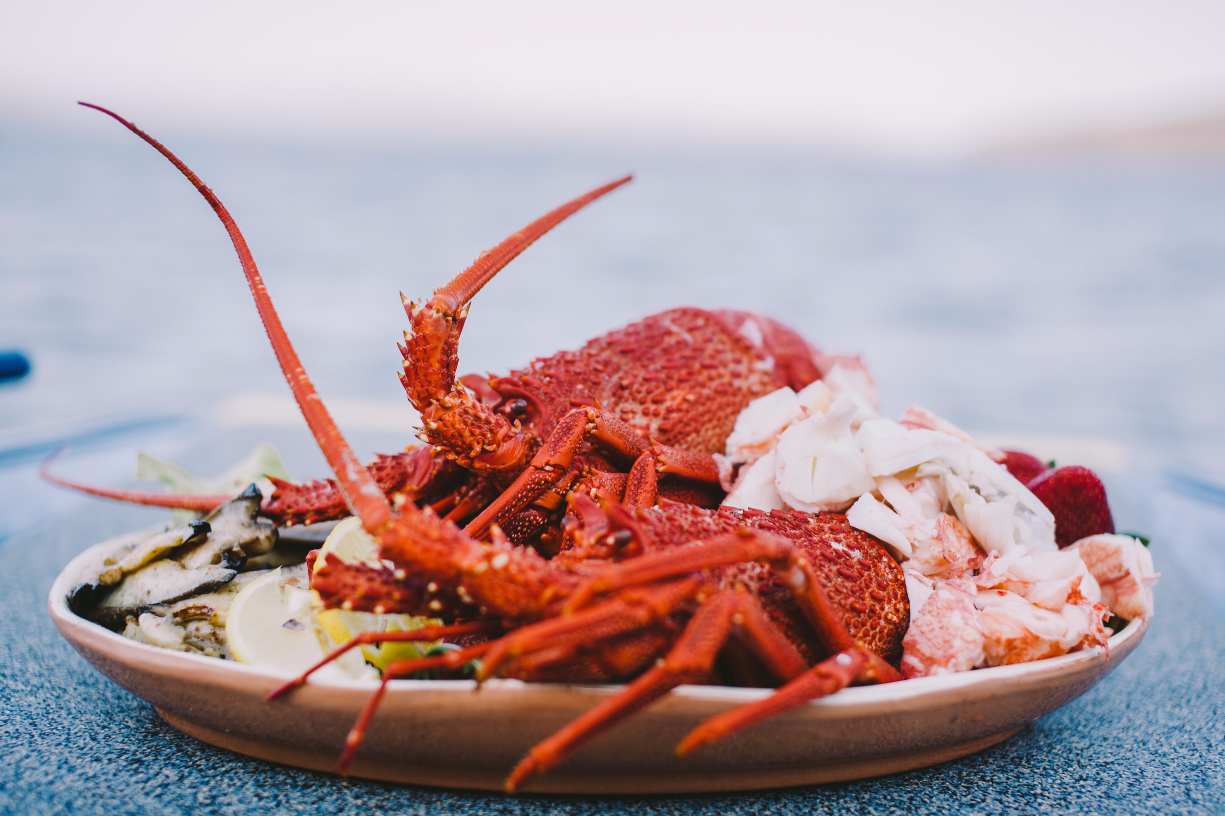Marine life in Australia is among the most diverse and ecologically significant in the world, encompassing vibrant coral reefs, expansive seagrass meadows, and a variety of unique marine species. The country’s waters are home to over 33,000 known marine species, with new discoveries continually expanding this list. At the heart of this biodiversity is the Great Barrier Reef, the largest coral reef system on Earth, covering approximately 344,400 square kilometers and supporting thousands of marine species, including six of the world’s seven marine turtle species. The reef plays a crucial role in Australia’s economy, contributing over $6.4 billion annually and sustaining 64,000 jobs, mainly in tourism and conservation efforts. However, climate change and coral bleaching pose significant threats to this ecosystem, prompting urgent conservation actions by organizations such as the Great Barrier Reef Marine Park Authority (gbrmpa.gov.au) and the Australian Institute of Marine Science (aims.gov.au).
Australia’s waters host numerous endemic marine species, including the leafy sea dragon, a species found exclusively in the temperate waters of South Australia. Another remarkable native species is the spotted handfish, a critically endangered fish that “walks” along the seafloor using modified fins. The Australian sea lion, found along the southern and western coasts, is one of the world’s rarest sea lions, with fewer than 12,000 individuals remaining. Research institutions like the Commonwealth Scientific and Industrial Research Organisation (CSIRO) (csiro.au) are studying the impact of environmental changes on these species, while national parks and conservation areas, such as those managed by Parks Australia (parksaustralia.gov.au), help protect their habitats.
Mangroves and seagrass meadows also play a vital role in supporting marine life in Australia. The country boasts approximately 11,500 square kilometers of mangroves and 51,000 square kilometers of seagrass meadows, both of which act as natural carbon sinks, storing millions of tons of CO2 each year. These ecosystems provide essential nurseries for juvenile fish and protect coastlines from erosion and storm surges. However, 20% of Australia’s seagrass meadows have been lost in the past 50 years, largely due to pollution and coastal development. Conservation initiatives led by the Australian Marine Conservation Society (marineconservation.org.au) and Seagrass-Watch (seagrasswatch.org) are actively working to restore these vital habitats.
Climate change remains one of the biggest threats to marine life in Australia, with ocean temperatures rising by approximately 1.5°C since pre-industrial times. The 2016 and 2017 coral bleaching events affected nearly two-thirds of the Great Barrier Reef, while ocean acidification is weakening coral structures and shellfish populations. Scientists at the University of Queensland (uq.edu.au) and the Australian Research Council Centre of Excellence for Coral Reef Studies (coralcoe.org.au) are developing strategies to combat these challenges, including assisted evolution techniques to breed corals that are more resistant to rising temperatures.
To mitigate these threats, Australia has designated over 60 marine protected areas, covering approximately 45% of its territorial waters. These areas, regulated by the Department of Climate Change, Energy, the Environment and Water (dcceew.gov.au), aim to limit fishing activities and protect marine biodiversity. Sustainable fishing practices, plastic reduction initiatives, and reef restoration programs are being promoted by organizations like the World Wildlife Fund (WWF) Australia (wwf.org.au), ensuring that future generations can continue to experience the wonders of Australia’s marine ecosystems.
The Great Barrier Reef: A Living Wonder of the World
A vast ecosystem spanning thousands of kilometers
The Great Barrier Reef stretches over 2,300 kilometers along the northeastern coast of Australia, covering approximately 344,400 square kilometers. It consists of around 2,900 individual reefs and 900 islands, making it the largest coral reef system on Earth. This biodiversity hotspot is home to 1,500 species of fish, 400 species of coral, and six of the world’s seven marine turtle species.
A critical habitat for marine species
Marine life in Australia heavily depends on the Great Barrier Reef for survival. Dugongs, sea snakes, and over 30 species of marine mammals, including dolphins and whales, thrive in these waters. The reef also supports an estimated 4,000 species of mollusks and over 200 species of birds. This ecosystem provides crucial breeding and feeding grounds for countless marine species.
Economic and tourism significance
The Great Barrier Reef contributes over $6.4 billion annually to Australia’s economy, supporting around 64,000 jobs, mainly in tourism and marine research. It attracts over 2 million visitors each year, making it one of the most significant natural tourist attractions worldwide. Snorkeling and diving activities drive local economies, bringing business to coastal towns such as Cairns and Port Douglas.
The impact of climate change and human activities
Marine life in Australia faces severe threats due to climate change and human activities. Coral bleaching, mainly caused by rising sea temperatures, has affected 93% of the reef’s coral formations in recent years. Pollution, overfishing, and coastal development also contribute to habitat degradation, making conservation efforts critical for its survival.
Conservation and restoration efforts
Australia has implemented multiple conservation initiatives, such as the Great Barrier Reef Marine Park Authority and the Reef 2050 Plan. These programs aim to reduce pollution, restore damaged reefs, and enhance marine biodiversity. Scientists are experimenting with coral seeding and genetic modification techniques to create more resilient corals capable of surviving extreme climate conditions.
Unique Marine Species Found Only in Australian Waters
Endemic fish and invertebrates
Australia’s marine environment is home to thousands of endemic species, meaning they are found nowhere else in the world. The leafy sea dragon, a close relative of the seahorse, is exclusive to southern Australian waters. Another rare species, the spotted handfish, uses its pectoral fins to “walk” on the ocean floor, a unique adaptation among marine life in Australia.
Marine mammals unique to Australia
Several marine mammals, including the Australian sea lion and the snubfin dolphin, are native to Australia. The Australian sea lion, found along the southern and western coasts, is one of the rarest sea lion species, with an estimated population of fewer than 12,000 individuals. The snubfin dolphin, first described in 2005, is restricted to northern Australian waters.
Reptiles and sea turtles
The flatback turtle is an exclusive species found in Australian waters, primarily nesting along the northern coastlines. Unlike other sea turtles, flatbacks have relatively small geographic ranges, which increases their vulnerability to environmental changes. Their population is estimated at around 20,000 nesting females.
Unique coral and jellyfish species
Australia’s waters host thousands of coral species, including the stunning fluorescent green coral, which glows under ultraviolet light. The Irukandji jellyfish, one of the most venomous jellyfish species, is native to northern Australian waters. Despite their tiny size, their sting can cause severe pain and life-threatening complications.
Challenges to endemic marine species
Marine life in Australia faces increasing pressure due to habitat destruction, climate change, and pollution. Endemic species, which rely on specific environments, are particularly vulnerable to rising ocean temperatures and human activities. Conservation efforts, such as protected marine zones, are crucial to ensuring the survival of these unique species.
The Role of Mangroves and Seagrasses in Marine Ecosystems
Critical habitats for marine biodiversity
Mangroves and seagrasses play essential roles in supporting marine life in Australia by providing breeding, feeding, and nursery grounds for numerous species. Australia’s 11,500 square kilometers of mangroves serve as protective habitats for juvenile fish, crustaceans, and migratory birds. Seagrass meadows cover approximately 51,000 square kilometers of Australia’s coastal waters.
Coastal protection and carbon sequestration
Mangroves and seagrasses act as natural barriers against coastal erosion, storm surges, and rising sea levels. They also store vast amounts of carbon, with Australian mangroves sequestering an estimated 20 million metric tons of CO2 annually. This makes them critical in combating climate change.
Threats from human activities
Pollution, deforestation, and coastal development pose significant risks to mangrove and seagrass habitats. In the last 50 years, Australia has lost around 20% of its seagrass meadows due to industrial expansion, poor water quality, and climate change. This loss directly impacts fish populations and marine biodiversity.
Marine species reliant on these ecosystems
Many endangered species, including dugongs and green turtles, rely on seagrass meadows for survival. Studies indicate that Australia has lost about 7,000 square kilometers of seagrass since the 1980s, threatening species that depend on them. Mangrove forests support juvenile reef fish, acting as critical transition zones before they migrate to the open ocean.
Conservation and restoration initiatives
Government programs like the Marine and Coastal Biodiversity Strategy aim to protect mangroves and seagrasses through habitat restoration and strict regulations. Community-driven initiatives also promote replanting and reducing pollutants to maintain the health of these critical ecosystems.
How Climate Change is Impacting Australia’s Marine Life
Rising sea temperatures and coral bleaching
Australia has experienced an increase in ocean temperatures of approximately 1.5°C since pre-industrial times. This warming trend has led to mass coral bleaching events, particularly in the Great Barrier Reef. The 2016 and 2017 bleaching events affected nearly two-thirds of the reef.
Ocean acidification and its effects
Higher CO2 levels have increased ocean acidification by about 30% since the Industrial Revolution, impacting marine life in Australia. This phenomenon weakens the calcium carbonate structures of corals and shellfish, leading to population declines and ecosystem instability.
Declining fish populations
Warming waters have caused shifts in fish populations, with some species moving southward in search of cooler habitats. Studies indicate that commercially valuable species like snapper and barramundi are being affected, altering fishing industries and food supply chains.
Increasing frequency of marine heatwaves
Australia has experienced over 20 marine heatwaves in the last two decades, disrupting ecosystems and endangering marine species. These heatwaves have led to mass die-offs of kelp forests and seagrass meadows, further affecting biodiversity.
Government and scientific responses
Australia’s National Climate Resilience and Adaptation Strategy aims to mitigate climate change impacts on marine ecosystems. Scientists are working on assisted evolution techniques, breeding more resilient corals to withstand higher temperatures and ocean acidification.
Conservation Efforts and Marine Protected Areas
Expansion of marine protected areas
As of 2023, Australia has established over 60 marine protected areas, covering around 45% of its territorial waters. These zones help regulate fishing, protect biodiversity, and restore degraded marine habitats.
Impact of overfishing regulations
The Australian government has implemented strict quotas and seasonal fishing bans to prevent overfishing. These measures have helped stabilize populations of species like the southern bluefin tuna, which had previously declined by over 80%.
Coral restoration projects
Numerous organizations are investing in coral restoration projects. The Coral Nurture Program has successfully reintroduced thousands of coral fragments onto damaged reefs, improving resilience and biodiversity.
Reducing plastic pollution in marine environments
Australia produces over 3 million tons of plastic waste annually, with a significant portion ending up in oceans. Government initiatives like the National Plastics Plan aim to eliminate harmful plastics by 2030.
Community-driven conservation efforts
Local communities play a significant role in marine conservation. Citizen science programs, beach clean-ups, and awareness campaigns have contributed to protecting marine life in Australia.




